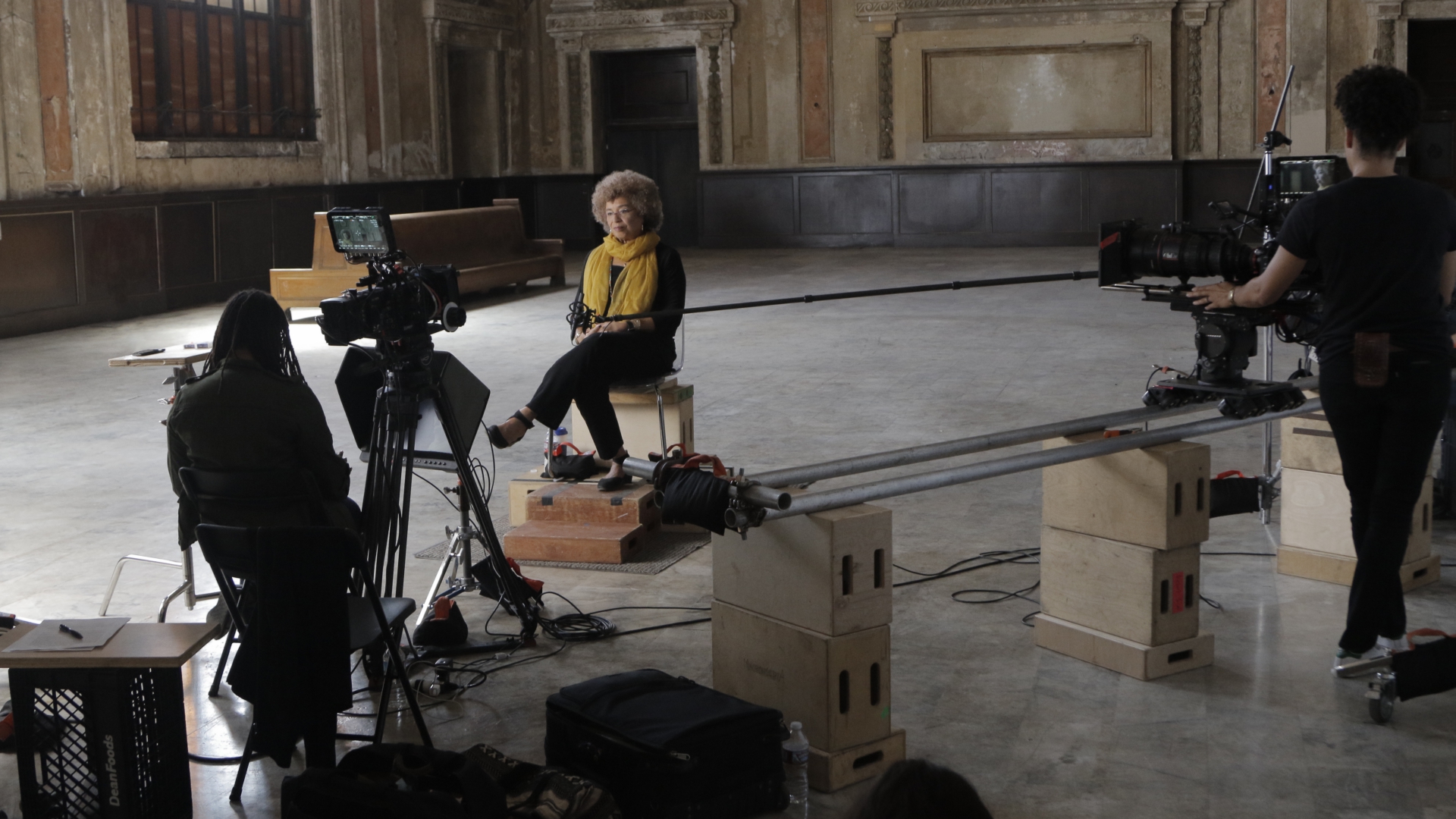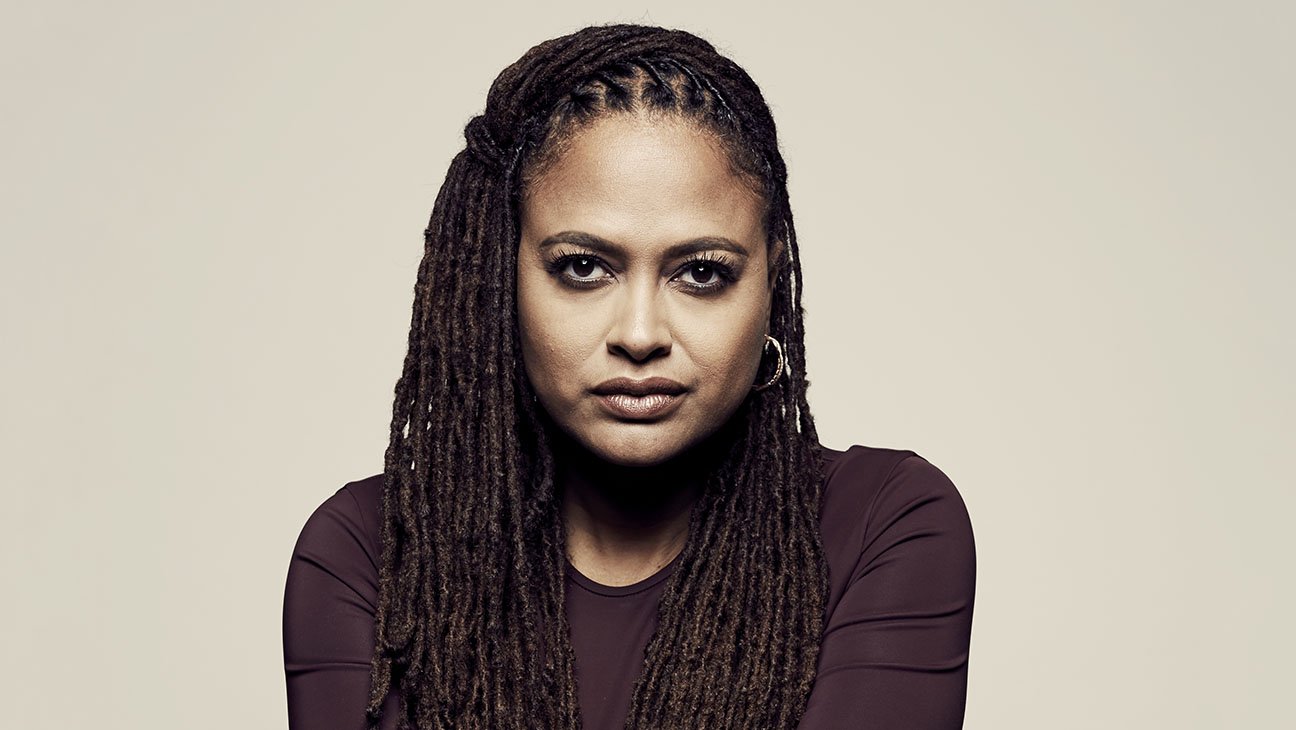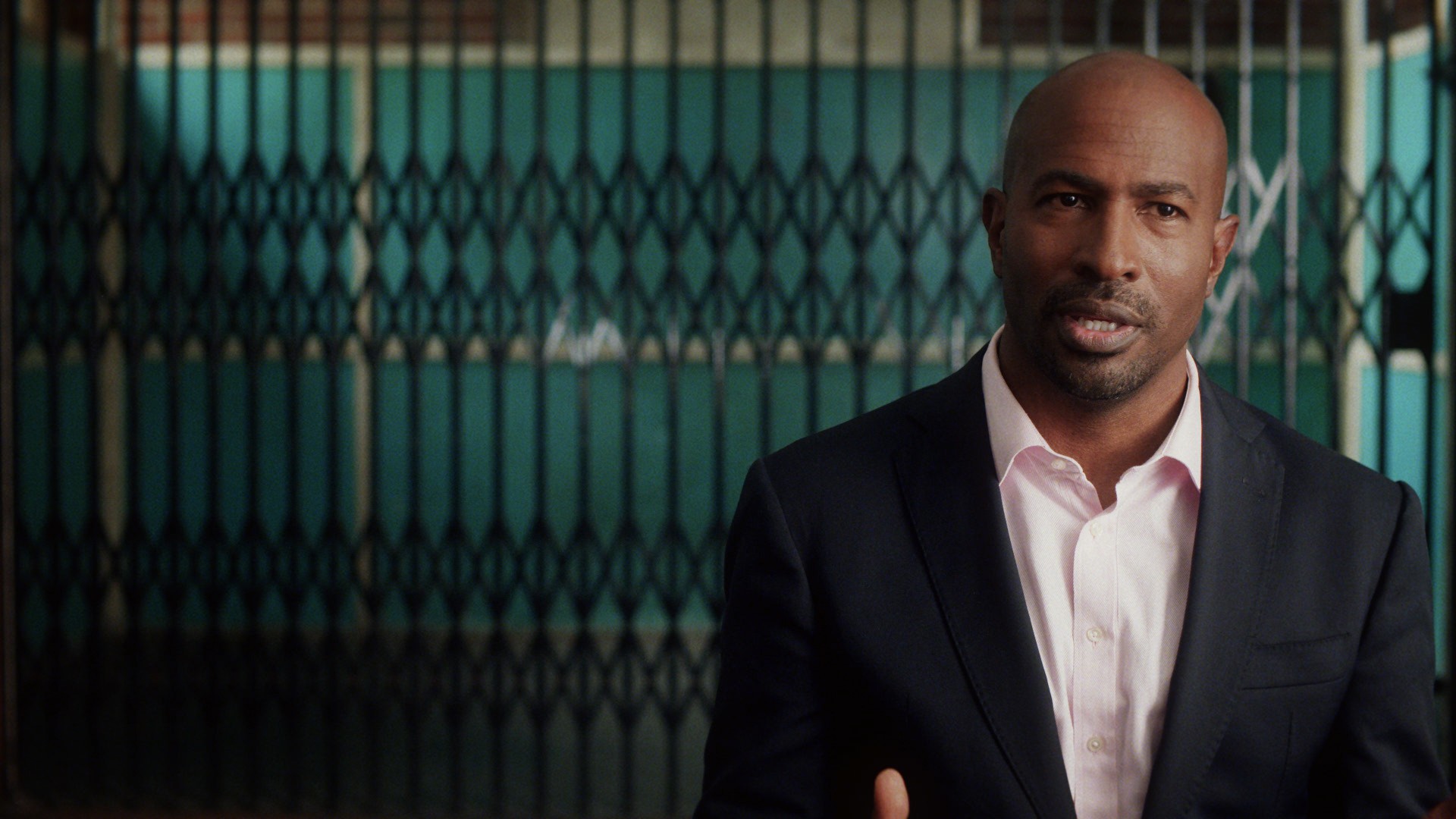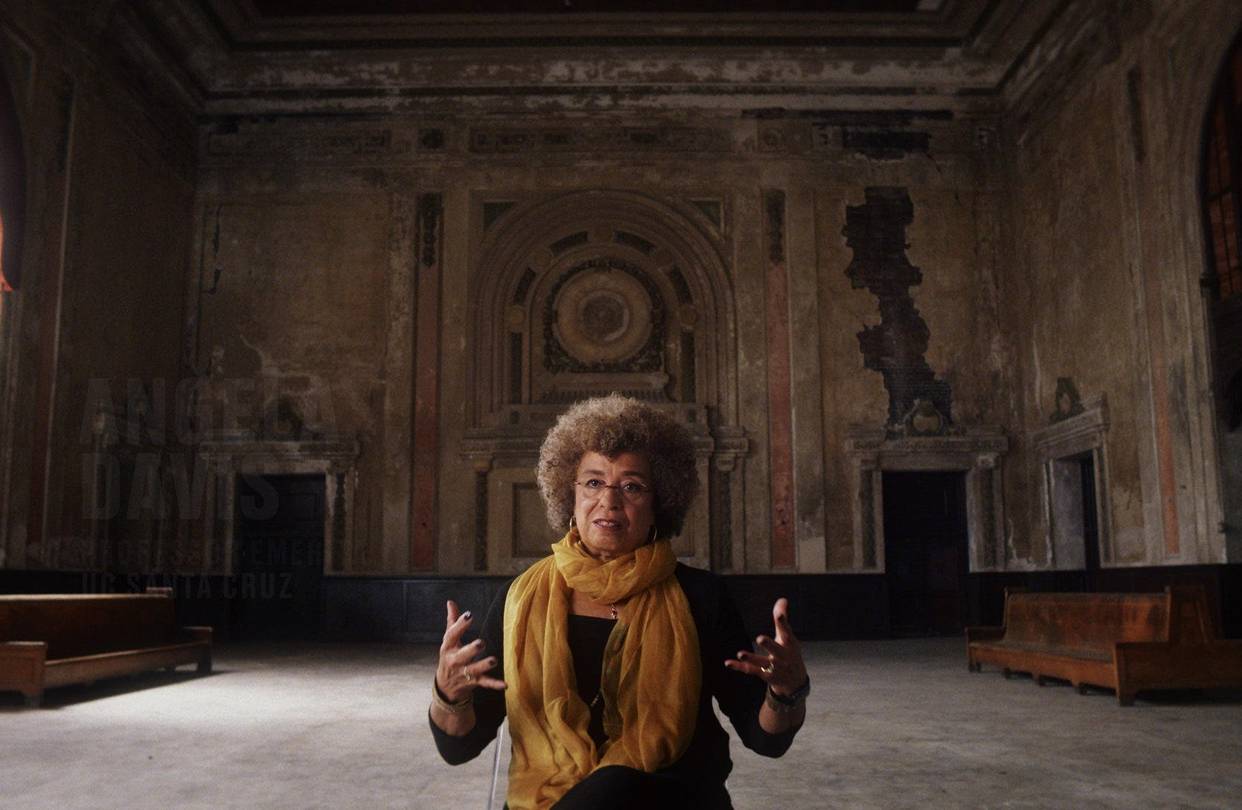Ava DuVernay Talks “13TH” at the 54th New York Film Festival
The first ever documentary to open the New York Film Festival, Ava DuVernay’s 13TH traces the history of systemic racial inequality in the United States from the Civil War up to present day. 13TH investigates how the 13th Amendment to the Constitution — “Neither slavery nor involuntary servitude, except as a punishment for crime whereof the party shall have been duly convicted, shall exist within the United States…” — in tandem with racist political agendas has led to mass incarceration and the corruption that pervades the U.S. criminal justice system today.
Before the world premiere of 13TH at the 54th New York Film Festival, Academy Award-nominated filmmaker Ava DuVernay spoke powerfully about her process making the documentary. She discussed filming from a place of hope, cinematic segregation, catalyzing change on the individual level, asking for permission from the families of Eric Garner, Philando Castile and Tamir Rice, and much more.
13TH is available to stream on Netflix starting on October 7th, 2016.
On deciding to make a prison documentary:
I feel like I grew up in an atmosphere where prison was always present and talked about in my neighborhood. “Where’s Derek? Oh he’s locked up…” It was just part of the fabric of growing up. Then when I went to UCLA, and I was an African American Studies major. Getting that historical context really [connected] my experience in the inner city to a lot of what’s in stock.
 Ava DuVernay interviewing longtime political activist & prison abolitionist Angela Davis on set of “13TH”
Ava DuVernay interviewing longtime political activist & prison abolitionist Angela Davis on set of “13TH”
On the evolution of 13TH:
[The project] started as an exploration of the prison industrial complex and prison for profit. I was always disturbed and fascinated by and furious that more people weren’t talking about the fact that multi-billion dollar companies were profiting off of black bodies and people from my community in prison. That someone was making money off of that punishment was always a disconnect for me.
I just followed my whims and my own curiosity [while making13TH]. It was about 6 hours on the cutting room floor of more segments. You can do a whole movie on plea bargains; Dawn Porter has done a whole movie on public defenders (Gideon’s Army). This film is a primer for folks who won’t read Michelle Alexander’s The New Jim Crow, won’t read Bryan Stevenson’s Just Mercy. But I also think there’s something to having it all strung together: to see [all of these issues] back to back and all lined up, you can see it all much more clearly and feel it more deeply.
On the recent U.S. prison strikes:
The fact that we have incarcerated people who are striking in this country [is incredible]. It’s not making the front pages hardly enough, and it’s not making the news hardly enough, whatever news we have left. Folks are trying to have their voices heard around these issues, so hopefully [this film] can do some of the groundwork for that.
On the image of the “Dignified Man”:
In many editorial sessions I found myself crying. There’s a piece in [the film] that I find very hard to watch: we call it “Dignified Man.” It’s a tall, elegant black man who keeps picking up his hat. He keeps picking up his hat as the racists are knocking it down as he’s trying to walk from one side of the street to another. I don’t know if you remember that clip, but we show it twice, once during the Civil Rights section and again during Mr. Trump’s section. I can’t watch that without tearing up. For whatever reason, that’s the clip for me where I put myself in that place, that isolation, being completely immersed in hatred and the physicality of that hatred. That is really difficult to watch, and so often, as we were making [13TH], when we got to brick walls or when we had to push ourselves to go further because something wasn’t clear, I would think of him and think that I have to do a story for him and people like him.
On progress coming at a snail’s pace:
Things are hard [for black Americans today], but comparatively I feel like we have it good. My grandmother was born and raised in South Central L.A. in the segregated West, which we don’t hear a lot about; we usually hear that about the South. You know, I feel that I cannot be completely pessimistic about things. I can be discerning, I can analyze, I can push and be uncompromising in wanting better, but I am not in a place of saying that we are in the place of our mothers and our grandmothers and our great grandmothers because I am a student of history, and I know that not to be true. I know that I live differently and move more freely than everyone in my family before me. As a black woman filmmaker, I move and can do things differently from black women filmmakers who even came around 10 years ago. So there is improvement happening. It’s coming at a snail’s pace, and while it is moving along at that pace, people are dying and being murdered. So it is urgent, but I can’t just rage all of the time.
On black joy and filming from a place of hope:
I’m glad some folks stayed until the end. The credit sequence is about black joy, because black trauma is not our life. We are survivors as many different kinds of people are. We have these kinds of hardships around the world and different people are effected by injustice and oppression in different ways. So the black joy sequence is very important. I just wanted us to leave feeling on the hook for something here because this is a generations old, centuries old problem. Just like Bryan Stevenson says at the end [of the film], it’s going to require a shift in our collective consciousness in order to unravel many deep layers of this system of oppression. I’m hopeful. This was filmed in a place of hope, which is the way I try to walk through the day.
 Ava DuVernay
Ava DuVernay
On the process of working with archival footage:
It’s a horrible, pride-swallowing siege of an awful process. It’s interesting because you can’t manipulate archival footage, as we know. You can search for what you want that fits the piece of the puzzle of what you need to say. We tried not to cut anything that wasn’t true to what it was, and with that mandate, it made it much more difficult.
In a project like this, you get to talking about something and then you stumble into a new idea and you just want to go down that rabbit-hole. Part of the process was trying to stay focused on a thesis. You can order archival footage for one thing and something else comes in that sparks your imagination and you want to go there. It was a lot to wrangle. We had about 1,000 hours of archival that we had to cut down. It cost a lot, big ups to Netflix. They’ve got deep pockets. Thanks Luke Cage, thanks Stranger Things.
On catalyzing change on the individual level:
I believe change comes through the individual. When you look at the Civil Rights Movement, it was a 10-year movement, and it was a change that happened in the hearts and the minds of people that pushed legislative political change.
I think of the way that people in my own family used to talk about transgender people. [There was] a lack of knowledge and an ignorance about what it was or what it meant. Now, we have [more of an] awareness as a society about the humanity of all people, particularly transgender people. Forward-looking people are trying to protect that and be more mindful of what we say and what we do. I really can feel that shift in the past 5 years. That’s a whole segment of people that before, there was no emotional connection to. [I hope 13TH] can be a part of educating people on the fact that prisoners are people. These are black human beings — not just prisoners, not just villains — but these are people with legacy, with family. This is generational trauma.
 Political activist and commentator Van Jones in “13TH”
Political activist and commentator Van Jones in “13TH”
On manufactured mindsets and breaking through the “fog of ignorance”:
A big revelation for me was that so much of what we think has been manufactured and given to us. Why do we see a black man as a criminal more than a white woman as a criminal? Where did that come from? It sounds a little Kumbaya and Pollyanna, but I truly feel that [the film] can change people’s ideas about what this all means. When you see Black Lives Matter and you’re not sure, when you see that black person walking down the street and you’re not sure, when you hear the prison statistics — that you have some context for it that’s emotional, and we’re not all living in this fog of ignorance, which I think this country has been doing in relation to these ideas for a long time.
On embracing her “black womanness”:
What I love about being a black woman is: everything, every minute of every day. I would choose to be nothing else. I’m so proud of the black women in my family. I really embrace my black womanness, and I feel blessed. So that’s what I love about it.
On asking for permission from the families of Eric Garner, Tamir Rice, Philando Castile and more:
I lost my father — who I was, I am, very close to — less than 6 months ago. As I was making [the film], I struggled with whether to show the cell phone video, the liquor store video. The deal breaker was to think: what if there was a video of [my dad’s] last moments and I didn’t own it? All of that is public domain. I asked the permission of the families, but I could have put it in as everyone else does, playing it on the TV ad nauseum and on the internet. Can you imagine [witnessing] the last moments of your loved one in such a violent manner, and anyone can use it and not ask your permission? I called the first [family], and it was really too much for me to do and be able to finish the film. My sister, Tara DuVernay, who was our chief researcher on the film, took it over. And she’s a mother. She was able to have hours and hours on the phone with the folks who gave the video. I spoke to everyone at one point, but for the real work of it I have to shout out my sister Tara because I couldn’t function and do that, too. It was so dark to be in that place and hear their stories, and it was like another documentary [in itself]. This idea of black trauma and black death as a spectacle is a real question in the community, so we tried to debate that in the film.
 Angela Davis on set of “13TH” in Oakland, California
Angela Davis on set of “13TH” in Oakland, California
On the industrial production design in 13TH and filming Angela Davis:
We interviewed everyone in his or her own space, and my idea behind it was that [all aspects of the production design] represent labor. It’s brick and stone and glass and steel, and most of the locations feel very industrial, to connect to the idea of the labor that’s been stolen from black people in this country for centuries. That idea married with where do you shoot Angela Davis? She’s in Oakland, so in Oakland we found this old train station that was abandoned, and we were able to get access: illegal at first, but legal by the time Netflix found out about it. We cleaned it up, got in there, and I thought it was an extraordinary and very regal setting for that queen and what she had to say. The prison industrial complex—those words that we use so frequently and easily—[Angela Davis] coined that term with the group that she founded way back in the early 70s. She’s been a prison abolitionist since before some people in this room were born, so we wanted to honor her with a great frame.
On deciding whether to include the segment on Donald Trump:
I think it’s vital to have [Donald Trump] in there because he’s taken this country to a place that is going to be long studied, [that is] going to have repercussions past this moment regardless of whether he’s the president or not. We need to remember this moment… It was a question that we played with. Take him out? Leave him in? No, he doesn’t deserve a place in this, such and such. But you’ve got to show that stuff because it’s too important and it can’t be forgotten.
On cinema segregation and the accessibility of Netflix and studio films:
I love that [13TH] is on Netflix. It’s easily accessible, not just in the art house theater. We all know about cinema segregation. You can’t see Straight Outta Compton in Compton. You can’t see Selma in Selma. You can’t see many films that we love in communities of color because there are no movie theaters there. The closest theater is showing whatever the studios show, and black and brown people should have more than a steady diet of Marvel films — no disrespect to Marvel films. The idea that there is a cut off to exposure to certain kinds of films in certain communities is a real thing. That’s one of the reasons why I’ve become interested in studio films and what I can say in that space because I know it’s going to reach people that I care about.

